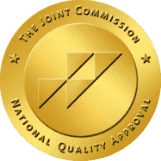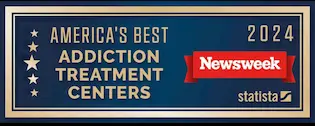CBT Therapy in Los Angeles
CBT Therapy in Los Angeles
Cognitive-behavioral therapy is an important component of addiction and mental health treatment. This evidence-based method helps individuals to heal and better their lives through behavioral changes. Iris Healing is proud to offer effective CBT in Los Angeles to our clients.
What is Cognitive Behavioral Therapy?
Cognitive-behavioral therapy (CBT) is a psychological treatment for a range of mental disorders, including depression, anxiety disorders, alcohol or drug use problems, marital problems, eating disorders, and severe mental illnesses.1
Find Help Now
Studies have concluded that CBT leads to remarkable improvements in one’s functioning and quality of life. Other studies show CBT to be just as effective or more effective than other forms of psychological therapy or psychiatric medications.
Some of the common conditions treated by CBT include:
Bipolar disorder- Obsessive-compulsive disorder (OCD)
- Anxiety
- Addiction
- Attention deficit disorder (ADD)
- Eating disorders
Post-traumatic stress disorder (PTSD)
Cognitive has to do with thought, judgment, or knowledge. Cognitive can be described as the mental process of perception, memory, judgment, and reasoning as opposed to emotional and volitional processes.1
Aaron Beck and the creation of CBT
Cognitive-behavioral therapy (CBT) was developed in the 1960s by Dr. Aaron T. Beck. Dr. Beck designed and carried out multiple experiments to test the psychoanalytic concepts of depression. While he expected that his research would validate the fundamental psychoanalytic concepts of depression, he was surprised when he discovered the opposite.2
Dr. Beck found that his patients had spontaneous negative thoughts. He called these thoughts “automatic thoughts.” He also found that automatic thoughts fell into three major divisions: the patients’ negative thoughts about themselves, the world, and/or the future. Equipped with his discovery, Dr. Beck helped patients identify and analyze their automatic thoughts. The process helped patients think more realistically and function better emotionally. Many patients changed their fundamental beliefs about themselves, the world, and other people.
Dr. Beck chose to call his method “cognitive therapy (CT),” or as it is commonly called nowadays, CBT (cognitive behavioral therapy). Over 2,000 studies have shown that CBT therapy is effective for treating psychiatric disorders, psychological problems, and medical illnesses with psychiatric components.2
Types of CBT
There are varying types of CBT approaches which change depending on the problem they are trying to solve. Some of the most common variations of CBT include:
- Cognitive therapy (CT)
- Cognitive behavior therapy (CBT)
- Acceptance and commitment therapy (ACT)
- Behavior therapy (BT)
Dialectical behavior therapy (DBT)- Cognitive processing therapy (CPT)
- Prolonged exposure therapy (PE)
- Integrative behavioral couples therapy (IBCT)
- Mindfulness-based cognitive therapy (MBCT)
- Motivational interviewing (MI)
- Shema therapy (ST)
- Habit reversal training (HRT)
- Relapse prevention (RP)
DBT vs. CBT
Two of the most common cognitive therapy approaches for treating addictions are cognitive behavioral therapy (CBT) and dialectical behavior therapy (DBT).
CBT is based on the idea that our behaviors are the results of our feelings and thoughts. As such, changing the way one thinks and reacts to situations will help them feel better and heal from mental illnesses. DBT is a more direct form of CBT. DBT helps people with extreme reactions healthily interact with the environment around them.3
Many healthcare professionals see DBT as a specific form of CBT. DBT is tailored to help people admit their discomfort while still feeling safe. The goal of DBT is to make sure that the patient chooses healthy behaviors over impulsive and harmful ones. The patient is meant to deal with triggers and develop healthy coping mechanisms.
There are a few major differences between DBT and CBT:
- CBT relies on the stoic philosphy and the Socratic methods, while DBT relies on mindful skills that use Buddhism and Zen practices
- CBT is used for depression and anxiety, while DBT is used for more extreme addictions, PTSD, and more
- CBT is targeted towards emotional regulation while DBT focuses on developing skills to recognize troublesome thoughts and redirect them3
CBT Techniques
Negative Thoughts
The first and most important part of CBT is recognizing how certain feelings, thoughts, and situations can lead to bad behaviors. This process can be very difficult, especially for those who struggle with introspection. However, when there is a breakthrough, one can discover themselves and the therapist can gain important insights about the best way to approach treatment.4
New Skills
The next goal is to practice new skills that can be used in the “real world.” This involves the patient practicing new coping methods and rehearsing with their therapist ways to avoid social triggers.
Goals
An important part of any treatment journey is setting goals. In CBT, the therapist helps identify the patient’s goal and helps them distinguish between long-term and short-term goals. The idea is to set SMART (specific, measurable, attainable, relevant, time-based) goals and focus on the results.
Problem-Solving
Another part of the CBT process is learning to identify and solve problems. These problems range from social triggers, life stressors, and other small issues that can compound to become a larger problem.
The steps for problem-solving in CBT include:
- List possible solutions to a problem
- Analyze the pros and cons of each solution
- Choose the desired solution
- Integrate that solution into one’s lifestyle
Self-Monitoring
There is no CBT treatment without tracking, also called diary work. Self-monitoring involves tracking behaviors, symptoms, and experiences over a chosen time frame and sharing that information with a therapist.
Self-monitoring is an essential part of CBT therapy since it helps a therapist understand a patient better and develop better ways to heal.
Addiction Treatment with CBT Therapy Principles and Methods
CBT is used to overcome drug addiction and alcoholism with three techniques:
- Helping the patient understand and dismiss the insecurities that lead to substance abuse
- Providing several self-help tools to improve the mood of the patient
- Teaching effective communication skills so a patient communicates their feelings and thought processes better
For people recovering from addiction, trigger identification is a huge part of the CBT process. Figuring out situations that “trigger” their cravings is the best way to ensuring that a person recovering from addiction stays sober. Cognitive-behavioral therapy teaches people recovering from addiction how to identify triggers and three ways of dealing with them.
According to the National Institute on Drug Abuse, there are three skills for trigger management:
- Recognize the circumstances that lead to drug usage and alcohol abuse.
- Avoid the trigger situations whenever possible and when appropriate.
- Cope with your triggers using CBT techniques to alleviate emotions and thoughts that lead to substance abuse.
The best part of cognitive-behavioral therapy is it can be practiced outside of the therapist’s office. Many people recovering from addiction are taught how to practice CBT exercises independently, from their home, or in a group.5
How is CBT Helpful for Addiction Treatment?
When a person suffering from addiction understands why they feel a certain way and how those feelings lead to substance use disorder (SUD), they are in a better place to deal with their addiction. CBT therapists help patients identify their negative automatic thoughts. Negative automatic thoughts come from internalized feelings and misconceptions about oneself. Most people with addiction try to bury painful thoughts and feelings with drinking and drug abuse.
CBT therapists also help patients revisit painful memories and reduce the pain caused by past experiences. The process aids individuals in learning new and positive behaviors used to replace drug use.
CBT Therapy for Dual Diagnosis
According to the National Institute on Drug Abuse, more than 50% of people who suffer from drug addiction also have a diagnosable mental illness. This is known as dual diagnosis – a situation in which a person suffers from two different mental illnesses.6
CBT is beneficial for treating mental illness and addiction. CBT helps patients unlearn every preconceived thought they had about themselves and teaches them new ways to make safe decisions.
CBT Therapy to Build Sober Living Skills
Building sober living skills through CBT is also known as relapse prevention. Therapists help patients learn how to anticipate problems and label them as “risky” for drug relapse. CBT therapy patients build coping skills that can be used to get out of high-risk situations and environments.
Relapse prevention can be used through techniques such as role-play and practicing skill-building elements. Essential parts of the CBT therapy process that ensure that a patient has sober living skills include that:
- The patient should have a wide range of coping strategies to deal with multiple high-risk situations
- Appropriate lifestyle changes need to be made to allow the person recovering from addiction space from tempting substances
- The frequency and number of healthy activities should be increased
- The patient should be aware that there will be minor relapses, but they should learn not to turn those into extended relapse periods
- Instead of giving up after a relapse, the patient should be taught how to practice relapse prevention skills
CBT therapy, DBT techniques, and other cognitive-behavioral therapy techniques help people struggling with addiction and people suffering from dual-diagnosis overcome their addiction problems and negative thoughts. This type of therapy can better one’s mindset and lead to a more positive life.
Resources
- https://www.apa.org/ptsd-guideline/patients-and-families/cognitive-behavioral
- https://beckinstitute.org/about-beck/history-of-cognitive-therapy
- https://psychcentral.com/lib/whats-the-difference-between-cbt-and-dbt#1
- https://www.mayoclinic.org/tests-procedures/cognitive-behavioral-therapy/about/pac-20384610
- https://www.ncbi.nlm.nih.gov/pmc/articles/PMC2897895/
- https://www.drugabuse.gov/publications/topics-in-brief/comorbid-drug-abuse-mental-illness
Related Content
Anxiety and Addiction
Depression and Addiction
Dissociative Identity Disorder and Addiction
Trauma and Addiction




